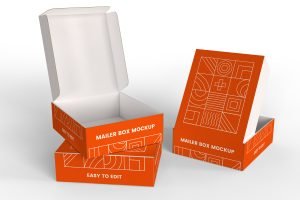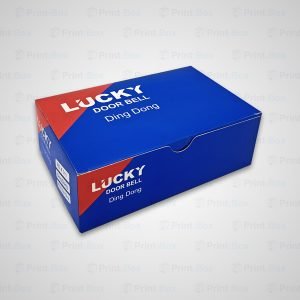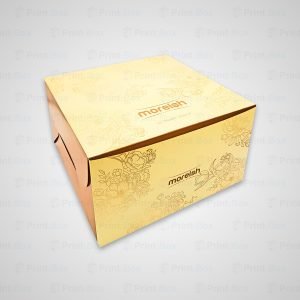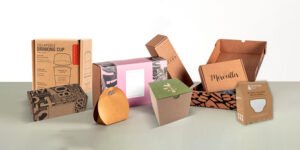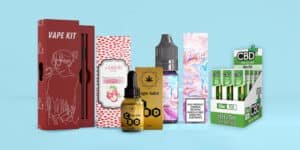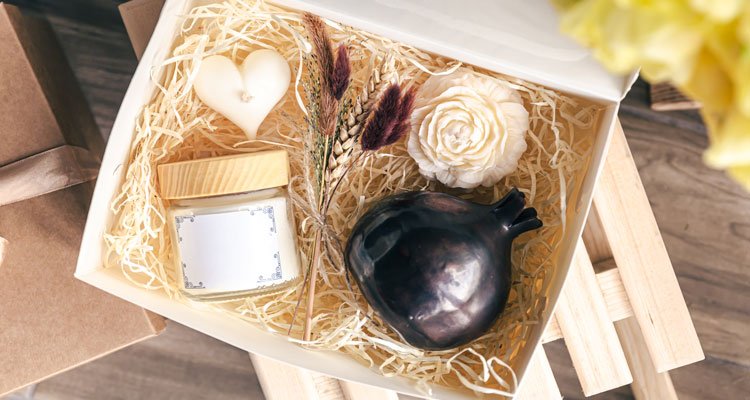In a world increasingly focused on sustainability and environmental responsibility, the choice of packaging materials is of paramount importance. Kraft boxes have emerged as a frontrunner in the packaging industry, offering not only versatility and durability but also a strong commitment to eco-friendliness. In this blog, we’ll explore the fascinating world of custom kraft boxes, from their origins and diverse applications to their environmental impact and the innovative ways they are shaping the packaging industry.
Table of Contents
ToggleThe Birth of Kraft Boxes
Kraft paper, the key component of kraft boxes, is a robust and unbleached paper that is created using a chemical pulping process. The term “kraft” is derived from the German word for “strong.” This type of paper was first invented by a German chemist named Carl F. Dahl in 1879. The unique pulping process, known as the kraft process, involves heating wood chips with chemicals to break down the lignin—a substance that gives wood its strength. This process results in a strong, brown paper known as kraft paper.
Kraft paper’s strength and versatility quickly caught the attention of the packaging industry. Kraft boxes, with their sturdiness and eco-friendly appeal, became a popular choice for packaging various products.
The Versatility of Kraft Boxes
Custom kraft boxes are celebrated for their adaptability and have found applications in various industries and settings. Here are some common uses for these versatile boxes:
a. Food Packaging: Kraft boxes are commonly used to package food products, from bakery goods like cakes and cookies to takeaway containers for sandwiches and salads. Their resistance to grease and moisture makes them a reliable choice for food packaging.
b. Retail Packaging: Many retail businesses use kraft boxes for packaging products like clothing, shoes, and accessories. The natural, earthy look of kraft paper adds an organic and rustic feel to the packaging.
c. Gift Boxes: Kraft gift boxes are an excellent choice for presenting gifts on various occasions. They can be customized with ribbons, stickers, or artistic designs to suit any celebration.
d. Cosmetic and Personal Care Products: Eco-conscious brands often opt for kraft packaging for their cosmetic and personal care products. It not only conveys a commitment to sustainability but also provides a stylish and clean look.
e. Shipping and E-commerce: Kraft boxes are frequently used in the e-commerce industry for shipping purposes. They are durable and provide excellent protection for products during transit.
f. Promotional Materials: Companies use kraft boxes with logo for promotional items, product samples, and corporate gifts. Customized kraft packaging can help a brand stand out and make a memorable impression.
The Environmental Appeal of Custom Kraft Packaging
One of the most significant advantages of kraft boxes is their minimal environmental impact. Here’s why kraft packaging is often hailed as an eco-friendly choice:
a. Biodegradability: Kraft paper is biodegradable, which means it naturally breaks down in the environment without leaving harmful residues. This characteristic aligns with the principles of sustainability and responsible packaging.
b. Renewable Resource: Kraft paper is primarily made from wood pulp sourced from sustainably managed forests. These forests are continually replanted, ensuring a reliable and renewable source of raw materials.
c. Recyclability: Custom kraft packaging is easily recyclable. They can be repulped and turned into new paper products without significant loss of quality. This reduces the demand for virgin materials and lowers the overall environmental impact.
d. Minimal Chemical Treatment: The kraft process, which produces the paper, uses fewer chemicals than other pulping methods. This minimizes water pollution and chemical waste.
e. Reduction in Carbon Footprint: The manufacturing process for kraft paper involves fewer greenhouse gas emissions, making it a more environmentally responsible choice compared to bleached paper options.
f. Lower Energy Consumption: The kraft process is known for its energy efficiency, consuming less energy than some other pulping methods. This translates to a smaller carbon footprint.
Customization and Design Possibilities
Printed kraft boxes can be customized to meet specific needs and convey the desired branding and aesthetic. Here are some aspects of customization and design possibilities:
a. Printing: Kraft paper provides an excellent canvas for printing, allowing brands to add logos, product information, and artistic designs. The brown backdrop of kraft paper often adds a rustic and organic charm to printed materials.
b. Die-Cutting and Embossing: Custom shapes and embossed patterns can be added to printed kraft boxes, making them unique and visually appealing.
c. Window Cutouts: Kraft boxes can feature window cutouts that showcase the product inside, providing a glimpse of the contents and enhancing the overall packaging experience.
d. Stickers and Labels: Brands can use stickers or labels to add branding elements and information to kraft boxes. These can be easily removed or replaced, allowing for flexibility in packaging design.
e. Ribbons and Twine: To add a touch of elegance and a rustic feel, kraft boxes can be adorned with ribbons, twine, or other natural materials.
f. Diverse Sizes and Shapes: Kraft boxes are available in various sizes and shapes, allowing brands to choose the most suitable options for their products. Whether you need small, rectangular boxes for jewelry or large, square boxes for clothing, there’s a kraft box to fit.
The DIY Kraft Box
For those who enjoy craft projects, making your own DIY kraft box can be a fun and creative endeavor. Here’s how you can make a simple kraft box from scratch:
Materials Needed:
a. Kraft paper
b. Ruler
c. Scissors
d. Pencil
e. Glue or adhesive tape
Steps:
1. Measure and cut a square or rectangular piece of kraft paper. The size will depend on the desired dimensions of your box.
2. Place the kraft paper with the pattern side facing down. Fold it in half both horizontally and vertically to create creases, making four smaller squares.
3. Unfold the paper, and you’ll see the creases forming a cross in the center.
4. Cut along the creases from the corners of the paper towards the center. This will create four flaps at the corners.
5. Fold the flaps towards the center, covering the center square.
6. Secure the flaps with glue or adhesive tape to create the bottom of the box.
7. For the box’s lid, repeat the process, but cut the paper slightly smaller than the bottom piece, so it fits comfortably over the base.
8. Once both the lid and base are made, you can decorate them as desired with paint, markers, stickers, or any creative materials you prefer.
9. Your DIY kraft box is ready for use!
The Charm of Handmade Kraft Boxes
Handmade kraft boxes hold a unique appeal. They often showcase a personal touch and a strong commitment to eco-consciousness. Using sustainable materials and handcrafting the packaging can be a powerful statement, appealing to customers who value authenticity and responsible choices.
Kraft Boxes in the Digital Age
In the age of e-commerce and digital shopping, packaging has become an essential part of the customer experience. As more consumers turn to online shopping, kraft boxes have become a significant player in the packaging landscape. Here’s how they fit into this digital world:
a. Unboxing Experience: Brands are increasingly focusing on creating memorable unboxing experiences for their customers. Kraft boxes, with their natural charm, are an excellent choice for this purpose. Their aesthetic adds an extra layer of excitement to the moment a package is opened.
b. Branding: In the digital realm, where online visibility is critical, kraft boxes offer an opportunity for brands to convey their values and personality. They provide a tactile, physical connection to the brand in a digital transaction.
c. E-commerce Shipping: Kraft boxes are commonly used in e-commerce shipping. Their durability and resistance to wear and tear make them a dependable choice for protecting products during transit.
d. Sustainability Messaging: In the digital age, brands often use online platforms to communicate their commitment to sustainability. Kraft boxes, with their eco-friendly appeal, help bridge the gap between online messaging and real-world actions.
Sustainability and the Future of Packaging
As the world faces environmental challenges, the importance of sustainable packaging has never been more evident. Kraft boxes exemplify this commitment with their biodegradability, recyclability, and minimal environmental impact. They are a prominent part of the packaging industry’s ongoing green revolution.
Conclusion
Kraft boxes are more than just packaging; they are a testament to the packaging industry’s evolution toward eco-consciousness and a reflection of consumers’ growing appreciation for responsible choices. Their versatility, design possibilities, and sustainable nature make them a significant player in the future of packaging, and their appeal continues to grow as the world seeks to reduce its environmental footprint. Whether it’s for retail, gifting, or e-commerce, kraft boxes made at PrintnBox offer an eco-friendly, stylish, and versatile solution for all your packaging needs.

